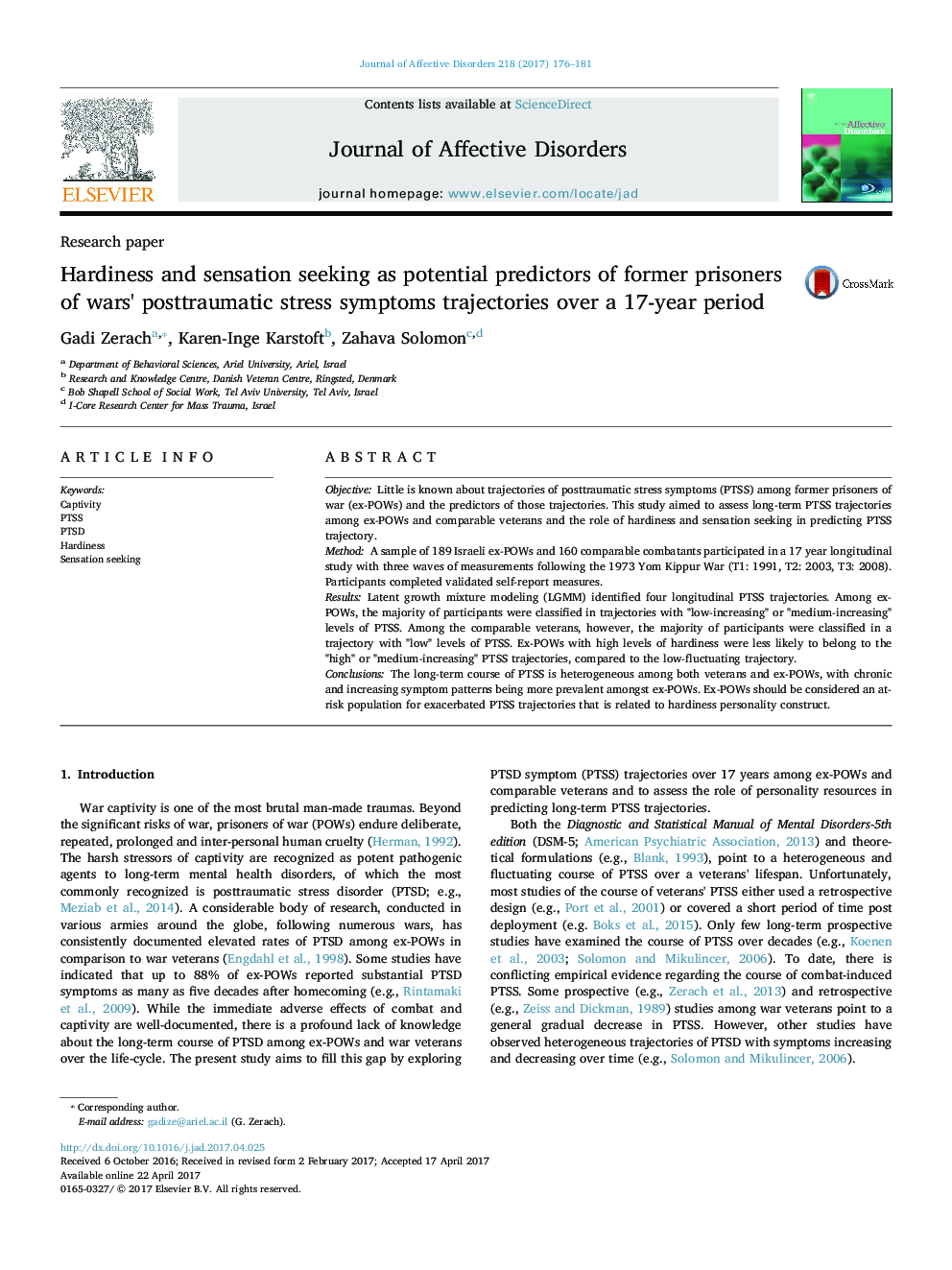| کد مقاله | کد نشریه | سال انتشار | مقاله انگلیسی | نسخه تمام متن |
|---|---|---|---|---|
| 5721944 | 1608107 | 2017 | 6 صفحه PDF | دانلود رایگان |
- We examined trajectories of posttraumatic stress symptoms (PTSS) among veterans.
- Four longitudinal PTSS trajectories were identified.
- Former prisoners of war were classified in trajectories with increasing levels of PTSS.
- Comparable veterans were classified in a trajectory with "low" levels of PTSS.
- Hardiness is a possible buffer for "high" or "medium-increasing" PTSS trajectories among ex-POWs.
ObjectiveLittle is known about trajectories of posttraumatic stress symptoms (PTSS) among former prisoners of war (ex-POWs) and the predictors of those trajectories. This study aimed to assess long-term PTSS trajectories among ex-POWs and comparable veterans and the role of hardiness and sensation seeking in predicting PTSS trajectory.MethodA sample of 189 Israeli ex-POWs and 160 comparable combatants participated in a 17 year longitudinal study with three waves of measurements following the 1973 Yom Kippur War (T1: 1991, T2: 2003, T3: 2008). Participants completed validated self-report measures.ResultsLatent growth mixture modeling (LGMM) identified four longitudinal PTSS trajectories. Among ex-POWs, the majority of participants were classified in trajectories with "low-increasing" or "medium-increasing" levels of PTSS. Among the comparable veterans, however, the majority of participants were classified in a trajectory with "low" levels of PTSS. Ex-POWs with high levels of hardiness were less likely to belong to the "high" or "medium-increasing" PTSS trajectories, compared to the low-fluctuating trajectory.ConclusionsThe long-term course of PTSS is heterogeneous among both veterans and ex-POWs, with chronic and increasing symptom patterns being more prevalent amongst ex-POWs. Ex-POWs should be considered an at-risk population for exacerbated PTSS trajectories that is related to hardiness personality construct.
Journal: Journal of Affective Disorders - Volume 218, 15 August 2017, Pages 176-181
